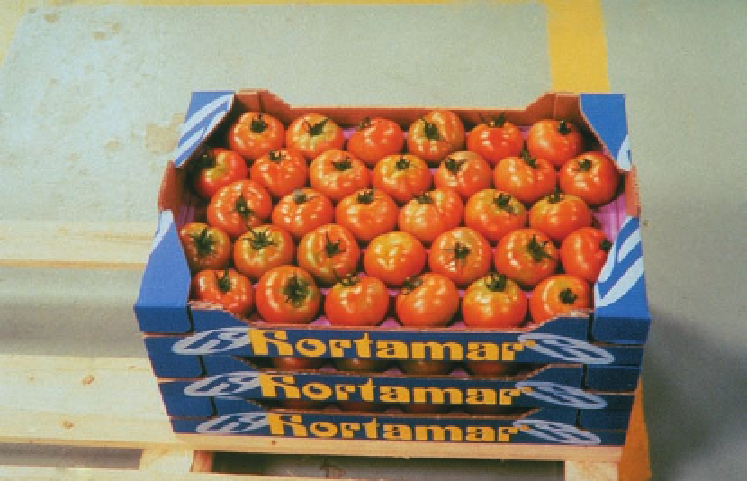Agriculture Reference
In-Depth Information
ethylene has a direct and essential implica-
tion, as a ripening regulatory hormone,
although there are ripening processes that
are independent of ethylene.
In some tomato cultivars (long life) the
ripening pattern has been altered, limiting
the production of ethylene by means of
breeding (Zacarías and Alferez, 2000).
Among the vegetables grown in green-
houses, tomato, watermelon and melon are
examples of climacteric fruit (Photo 15.2).
The respiration process after harvest
may negatively affect the quality of the
product, which is usually at its best at the
time of harvest for non-climacteric fruit and
in the majority of leafy vegetables. In cli-
macteric fruits, the synthesis of pigments
and volatiles (e.g. lycopene in tomato), chlo-
rophyll loss and the conversion of starch
into sugar, which develop after harvest, are
necessary processes to achieve maximum
quality (Salveit, 2003a).
The most relevant difference between
climacteric and non-climacteric fruit is
the ability to ripen once harvested.
Climacteric fruit can ripen once separated
from the plant, if harvested at a certain
ripening stage. This is not the case for
non-climacteric fruit, in which harvest
stops the fruit-ripening process, with the
exception of the degradation of the chloro-
phylls and the synthesis of carotenoids
(Martínez-Madrid
et al
., 2000). Therefore,
non-climacteric fruits must be harvested
when they reach their optimum ripening
point. For these reasons, in the ripening
process of climacteric fruits the physiolog-
ical and consumption ripening points are
different.
15.4
Ethylene
Ethylene (C
2
H
4
) is a gas, colourless at ambi-
ent temperature, which is normally pro-
duced under certain conditions in organic
compounds.
The synthesis of ethylene is enhanced
in mature reproductive tissues of climac-
teric vegetable species. For its synthesis eth-
ylene requires O
2
and to become active it
requires low CO
2
levels. The presence of
low concentrations of ethylene (ppb) is
enough to induce its effects.
The presence of ethylene has the fol-
lowing effects, among others: (i) it induces
the ripening of climacteric fruits and of
some non-climacteric fruits; (ii) it activates
the synthesis of anthocyanins in fruits
(modifying their colour); (iii) it contributes
Photo 15.2.
Tomato is a climacteric fruit that can ripen after harvest.

